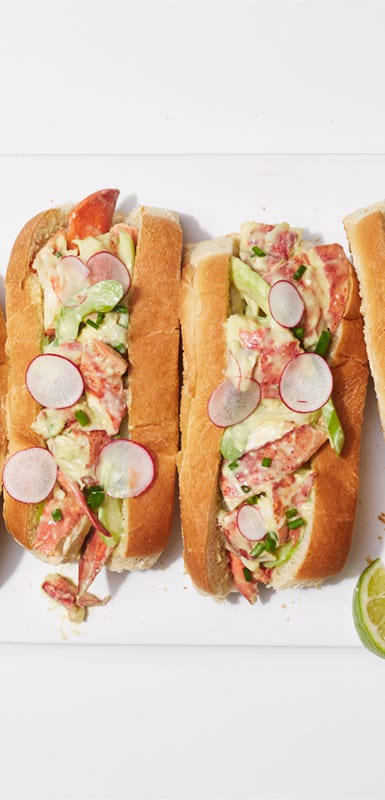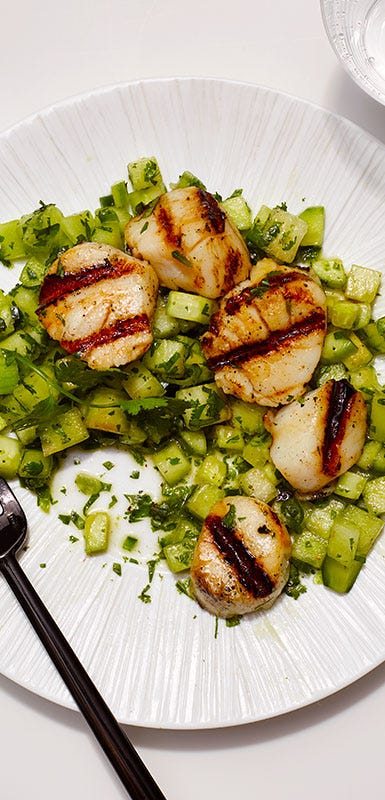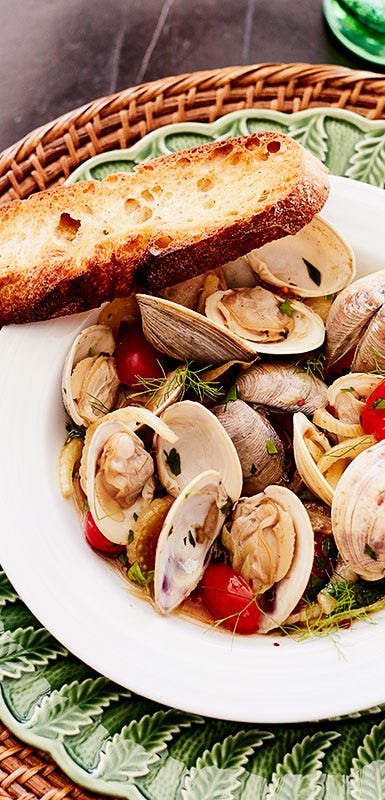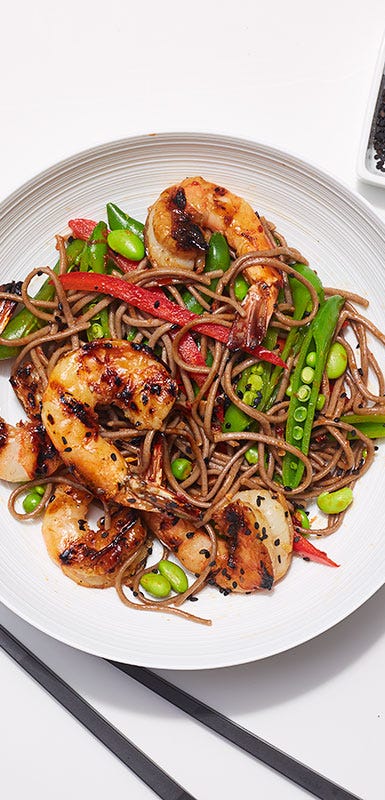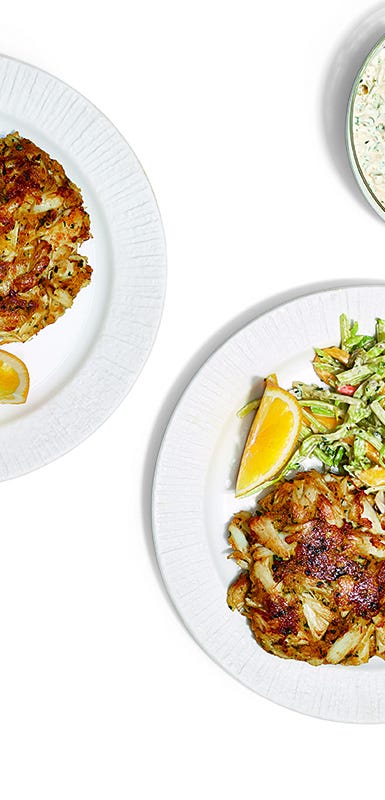Shellfish School
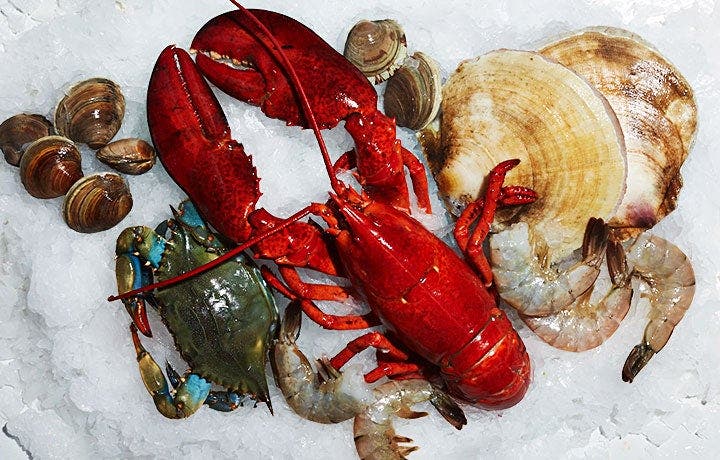
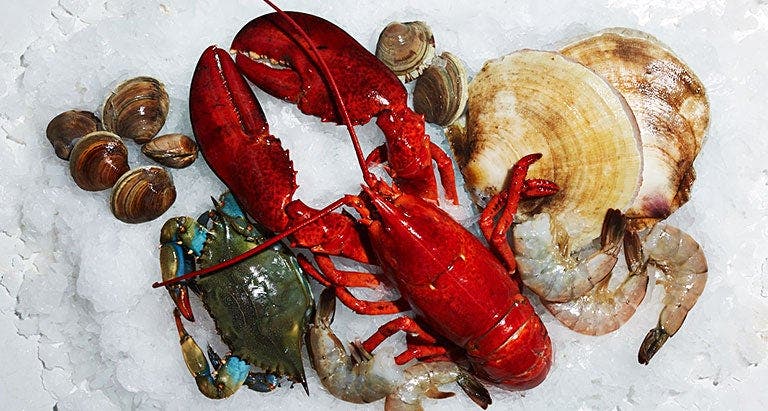
Intimidated by the thought of cleaning and cooking crustaceans, bivalves, and all those other strange-looking but utterly delicious shellfish you see at the fish market? Here’s everything you need to know about choosing and using these amazing proteins from the sea.
Lobster
Buying Lobsters are sold live, or, for a higher price, cooked and shelled. Some markets will also cook live lobsters to order, but you will still need to remove the meat from the shell.
Cooking If you plan to cook live lobsters at home, make sure you have a pot large enough to comfortably fit as many as you plan to cook. Fill the pot ⅔ full with water and add 1 tablespoon salt. Pick up lobsters by the back of the main shell, and drop them head first into boiling water. After water returns to a boil, simmer 7–9 minutes for 1½ pound lobsters; remove from water and drain.
Eating Wrap the claws in an old dish towel; crack the claws and the knuckles (joints) with a hammer, and pry out the meat. Twist the tail from the body, and cut open the underside with a knife or scissors. Pry open, and remove the tail meat.
Crabmeat
Buying There are many types and grades of crabmeat, at a range of prices. Mostly, you will find different types of blue, or Maryland crab, but you might also find Dungeness crab on the West Coast. The most common grades are jumbo lump, lump, or backfin crab. Backfin crab will have more shredded pieces, and more pieces of shell. You also might find canned, pasteurized crabmeat. This is still a refrigerated product, but it has a much longer shelf life unopened, about 60 days. All crabmeat is sold fully cooked and ready to eat. Any of these varieties will make a good crab cake—they will just taste slightly different.
RELATED: Three-Speed Dinners: Crabmeat
Scallops
Buying Sea scallops are the more common type, and they're available all year round. Depending on where you live, you might also find bay scallops, sold in fall and early winter.
Prepping In the US, scallops are almost always sold shucked and ready to use, except that they’ll still have the small muscle on the side. This should be removed using your fingers or a small knife, as it’s tough and chewy. Then give the scallops a quick rinse, to make sure there's no sand or grit, and pat dry thoroughly with paper towels.
Clams
Buying There are many varieties of clams. What’s available varies depending on where you live, but the most common types of hardshell clams you’ll find at your local fish market or grocery store are littlenecks, and their bigger cousin, cherrystones.
Storing Remember clams are alive (or should be) when you purchase them. If one is not tightly closed, tap the shell on the counter. If it doesn’t close, it’s dead, and should be discarded. When you bring clams home, they can be stored for several days in the refrigerator before use—just make sure to open the plastic bag they are in so they can breathe. Store in the slightly open bag, in a metal bowl.
Prepping Scrub closed shells well with a brush before using, making sure to get into the crevices. Rinse well to remove any grit.
RELATED: Clam Bake: The One Pot Kitchen Version
Shrimp
Buying Shrimp are widely available and reasonably priced, especially for something that is so easy and quick to cook! The majority of shrimp are frozen on the boat, so unless something is specifically labeled “fresh,” you can be pretty sure it was previously frozen. Shrimp labeling in terms of size can vary. A “large” shrimp in one store might be a “jumbo” shrimp in another. How many shrimp there are in a pound is a more reliable standard. For grilling, a larger size, about 16 to 20 per pound, is ideal. Peeled shrimp cost more, though peeling is easy to do at home.
Prepping Using your fingers, peel off the shell, including the legs, leaving the tail intact if your recipe calls for it, or for shrimp cocktail. Then, make a shallow cut down the center of the curved side of the shrimp with a small sharp knife. Do this under cold running water to rinse away the “vein.” Blot dry on paper towels. If not using right away, store in a metal bowl in the coldest part of your refrigerator.
RELATED: A Dozen Things to do with Shrimp

